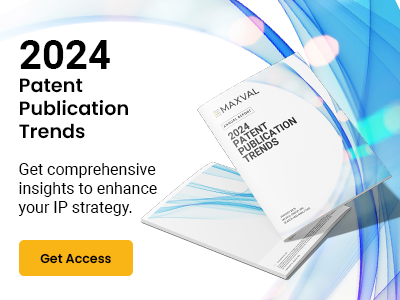Patent searching can play a vital role in a business’s lifecycle by providing crucial input to stakeholders so that they can better manage their investments and risks. The objectives of a patent search are flexible and can be adapted to the key business goals at hand. These goals can include filing patent applications, abandoning an idea/patent rights, launching a product, or asserting a patent against a competitor. The risk of acting on insufficient or inaccurate information can have both financial implications and long-term consequences on the growth of a business. Consequently, all large companies employ trained in-house and/or outside personnel to do their patent searches. The previous article looked into our selection of free academic search engines and bibliographic databases for conducting non-patent literature searches. We list below our top five recommendations for FREE patent search engines that can help anyone in identifying patent information.
Google Patents
Google Patents is our top recommendation among the free patent search engines.
Google Patents indexes more than 18 million patent documents published worldwide including full-text data from major offices such as the USPTO, EPO, JPO, KPO, WIPO, and CNIPA. Google Patents also offers the ability to search within Google Scholar and Books collections for non-patent literature using the CPC scheme.
It is particularly useful for doing a quick search on a topic. The speed and user interface make it a breeze to identify relevant documents quickly. It provides machine translations for documents in other languages making it valuable for simple searching using just the English language. It also presents all the relevant information such as images, legal status, assignment, citation on the same page for easy access and understanding. Advanced search options, such as the use of Boolean syntax, search terms, dates, inventor, assignee, etc. can be used to further refine your search.
Some of the drawbacks include the potential of missing out on recent publications and the need to manually verify information, such as status, priority, assignment, etc., due to a lag in updates. Despite these limitations, Google Patents is undeniably fast and easy to use for finding relevant results.
Lens
Lens is a free patent and scholarly search and citation tool offered by Cambia, an Australian non-profit organization.
It sources its patent data from various national registers such as the USPTO, EPO, WIPO, EPO’s DocDB, and other databases. One of its primary strengths is the ability to combine patent, sequence, non-patent literature, citations, and visualizations making it an attractive proposition as a discovery and analytics tool. Advanced searching, native language searching, and filters are possible. It is fast and easy to use. Further, registering for a free account also allows you to access additional features, such as saved searches, exports, and history that are not currently possible in Google patents.
There is not much to complain about the free, open-sourced and evolving Lens. It is only slightly behind other top databases in terms of reliability due to its frequency of updates, the extent of coverage, and missing features/fields.
Espacenet
Espacenet is an EPO-developed patent database that has been recently overhauled to make it useful for scientists, engineers, and entrepreneurs.
The new Espacenet allows you to do full-text searches in multiple languages. Some useful options include smart search, advanced search, classification search and machine translation of text. Espacenet is limited for performing complex searching requiring lengthy terms, operators and analysis. We use it in certain situations such as for downloads, verifying patent information, and inspecting INPADOC family members, legal status, citations, and national registers/file wrappers.
PATENTSCOPE
The PATENTSCOPE is a WIPO administered database that is focused on published PCT applications and patent documents from various national registers.
It has a wide coverage that is also targeted at engineers, scientists, and entrepreneurs rather than expert searchers/examiners. WIPO Translate is a tool that has been trained exclusively using patent documents and domains derived from IPC in offering machine translations. Advanced search options and features such as national phase information, open access NPL search, extended family information, chemical structure/substructure search (requires login), etc., are available in Patentscope making it a useful research tool.
USPTO
If you are interested in finding out particular U.S. patents and applications, there is no better source than USPTO’s website.
The user interface is rather uninspiring and the search options are limited. However, the USPTO patent search scores in being the source of truth when it comes to patent publications. USPTO offers a handy guide for the uninitiated on patent searching and other tools such as dossier, file wrapper, sequence, patent examination data system, assignment reel, etc.
Use a Professional Patent Search for Best Results
A thorough and systematic search for both patents and NPL is a necessary part of your IP due diligence. Searching for all relevant literature from the public domain is truly an arduous task even for the experienced searcher.
Free patent databases and search engines are useful in identifying prior art on your own. We do not recommend using the free tools suggested here when a systematic review of patents or a focused prior art search is needed. We recommend using search firms that utilize expert searchers, industry-leading databases, and the latest technological tools to provide you meaningful results on time and within budget for such studies. MaxVal’s expert researchers combine their experience and expertise to conduct a robust and comprehensive search.
Get in touch with us to know more.




